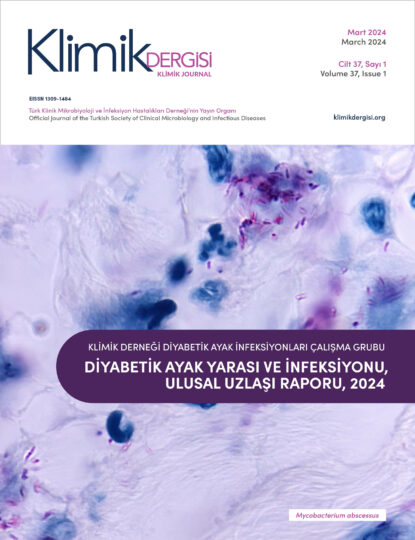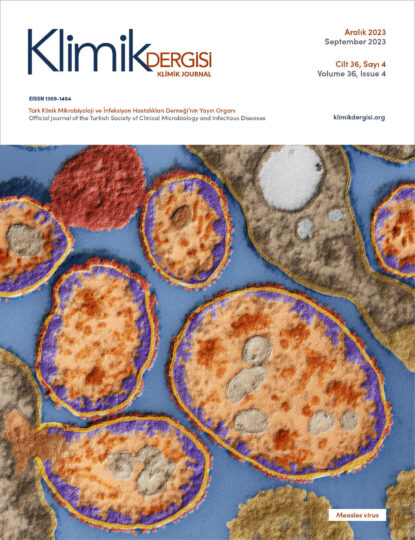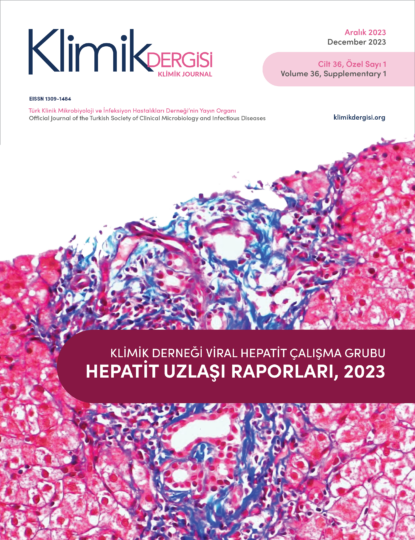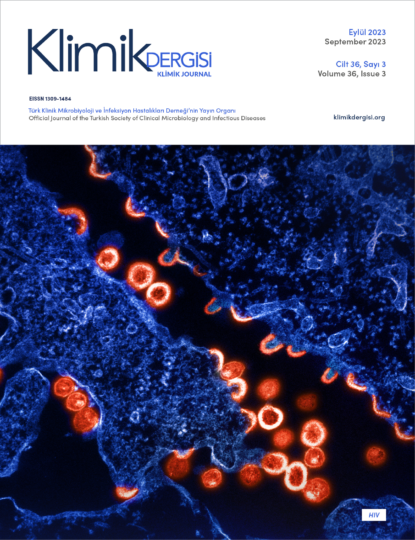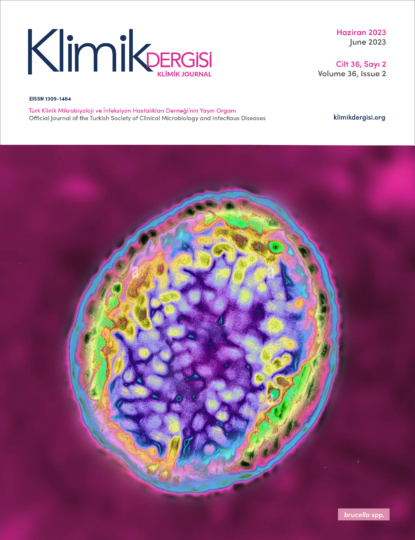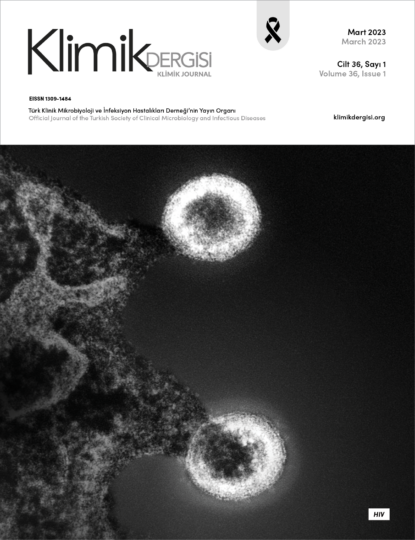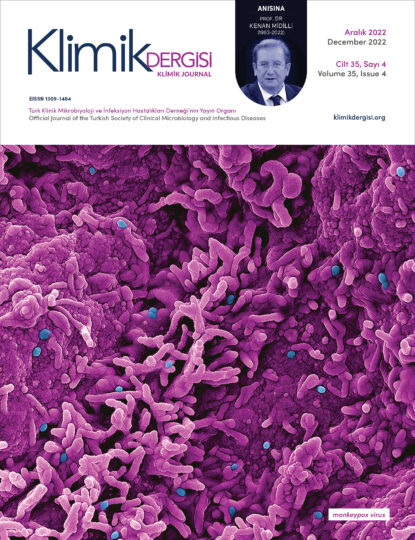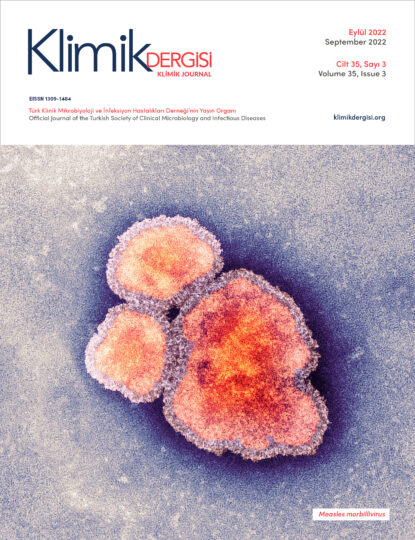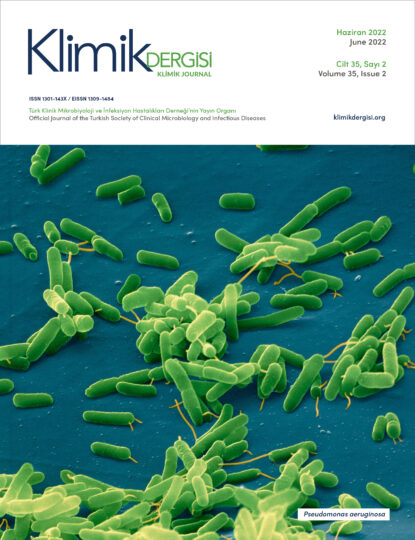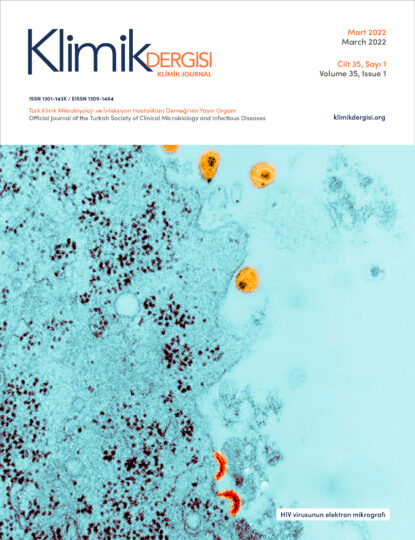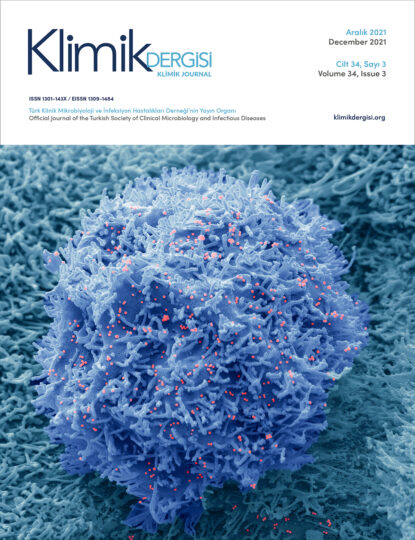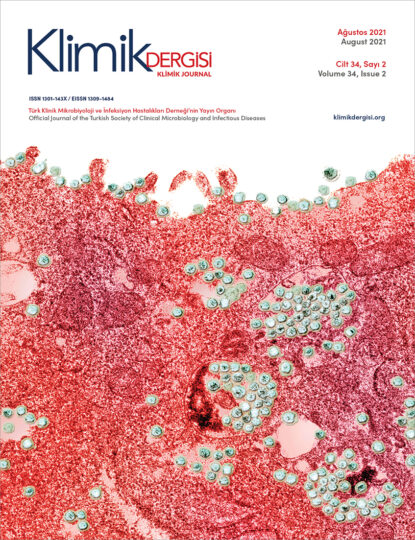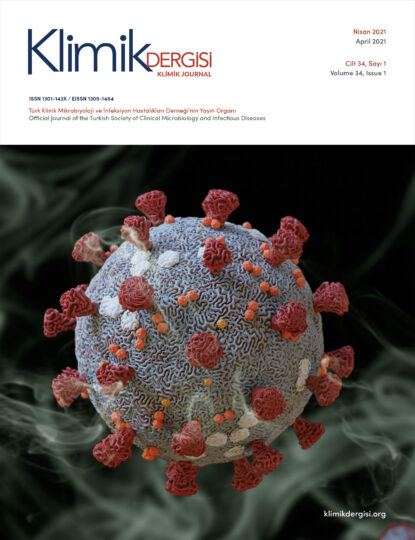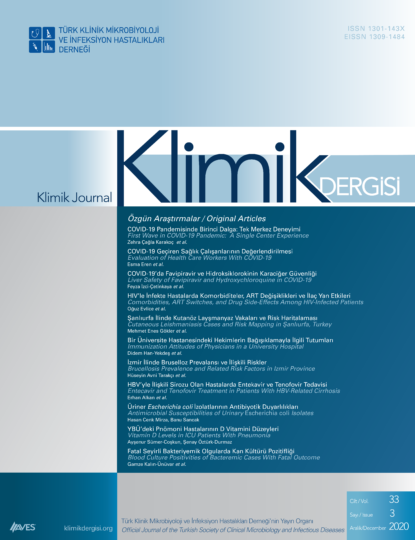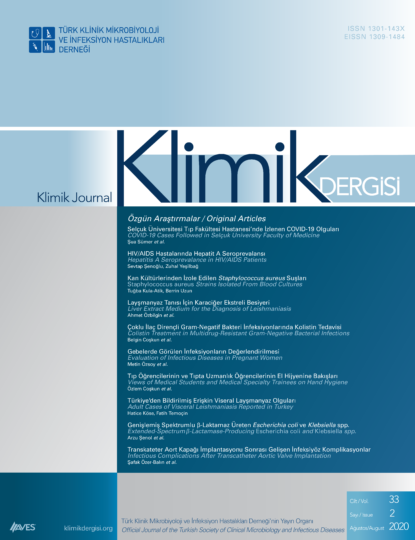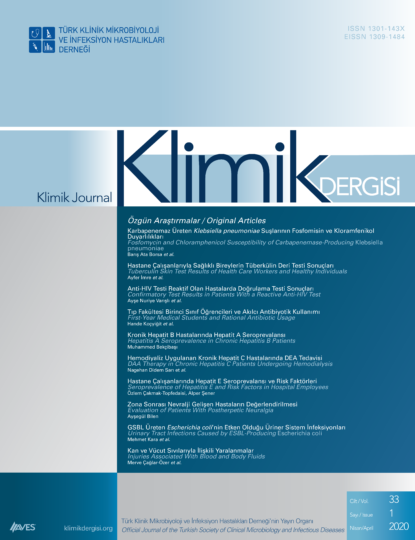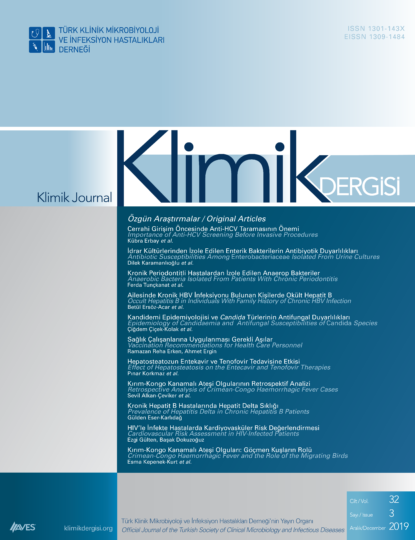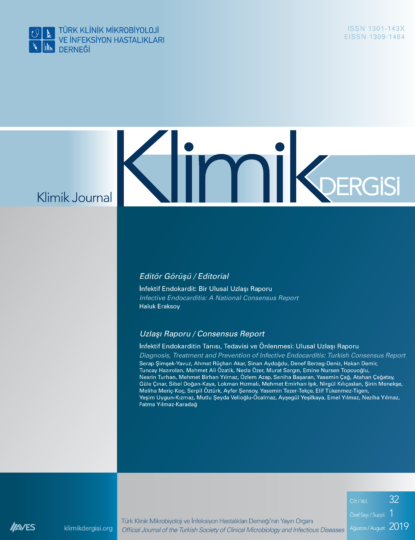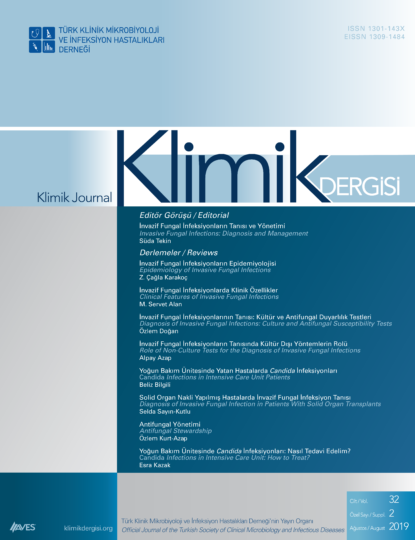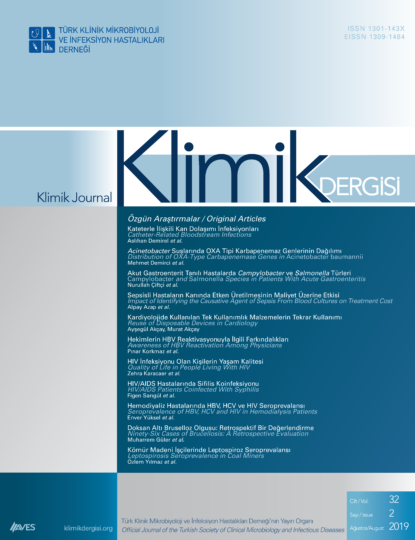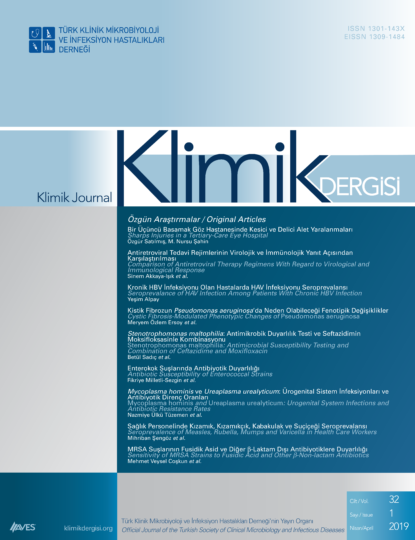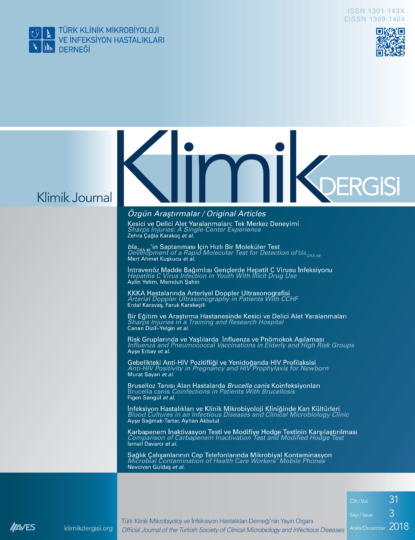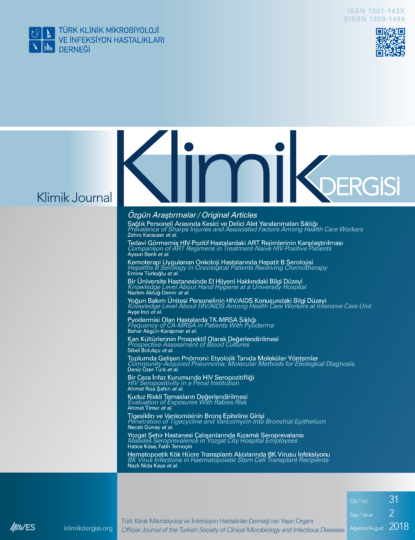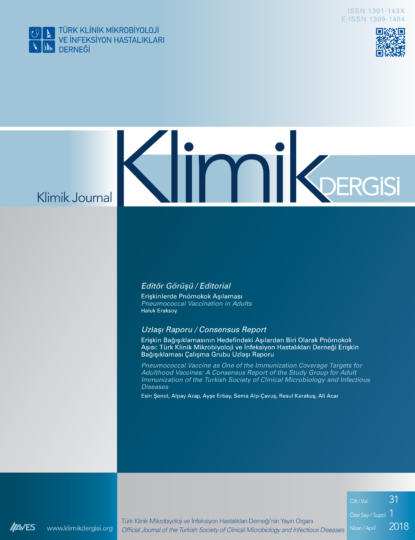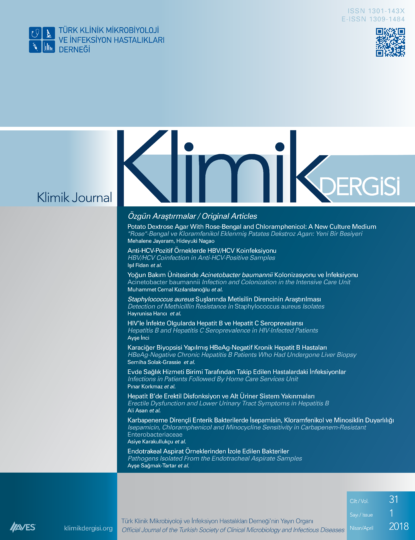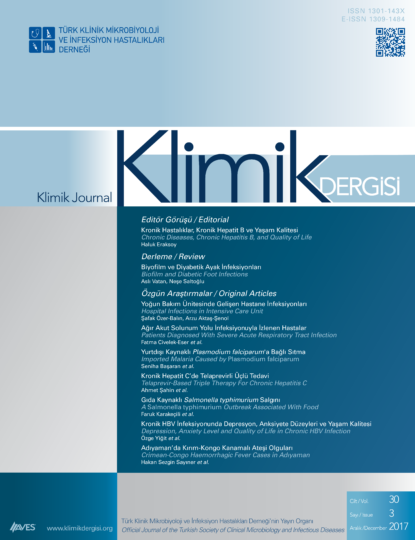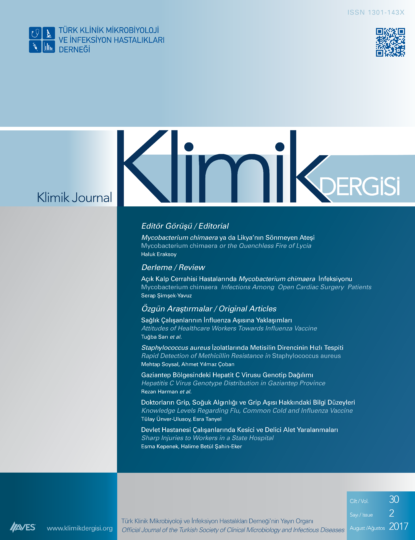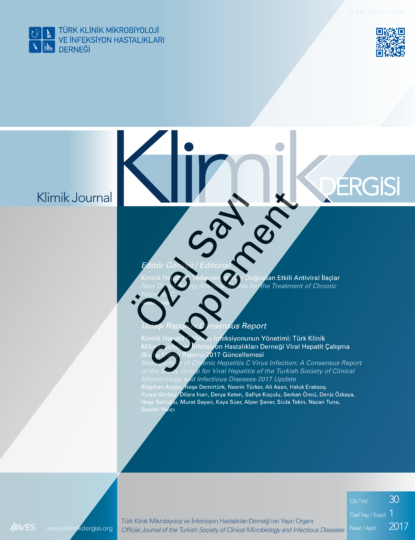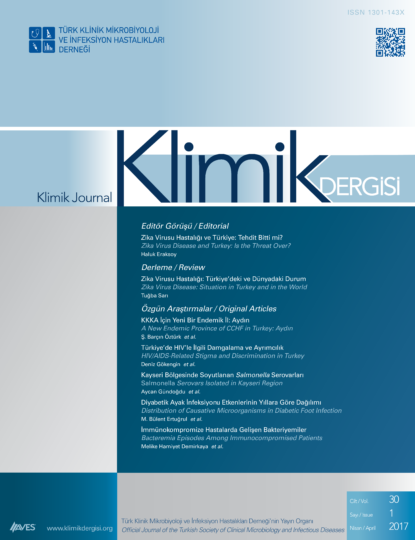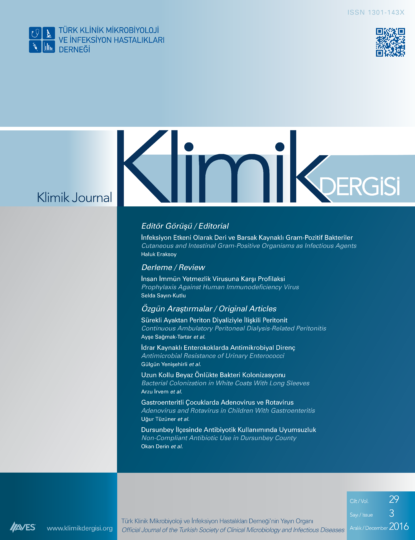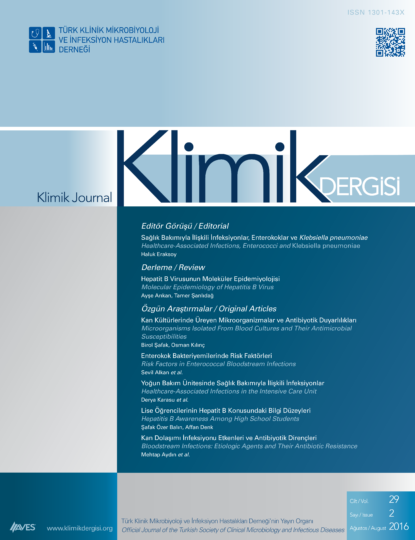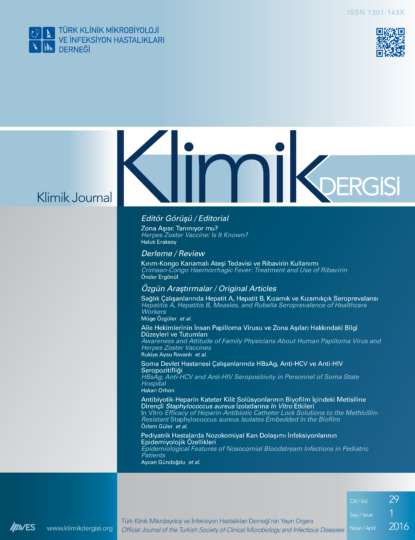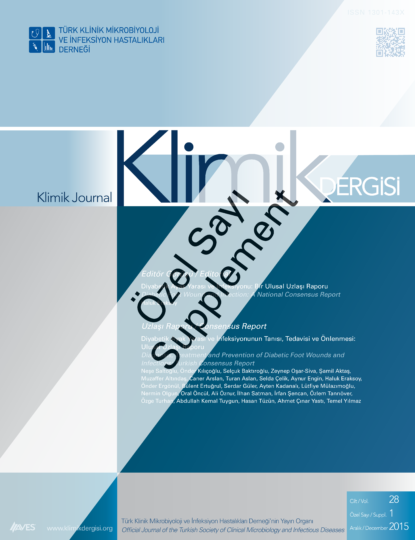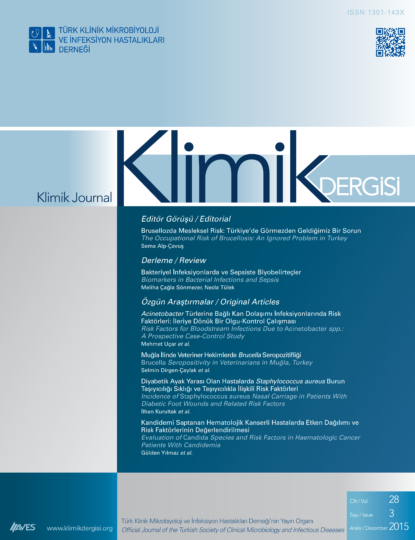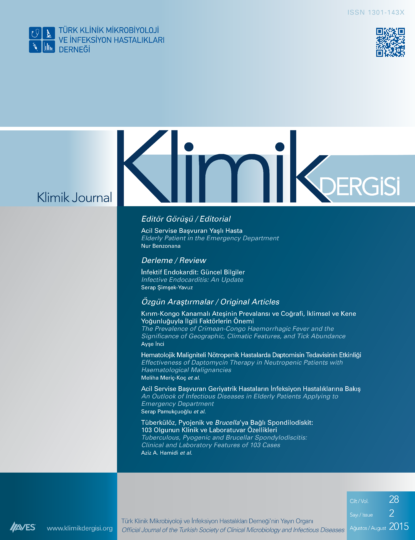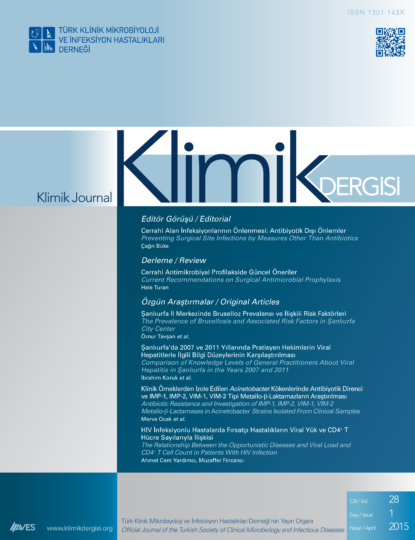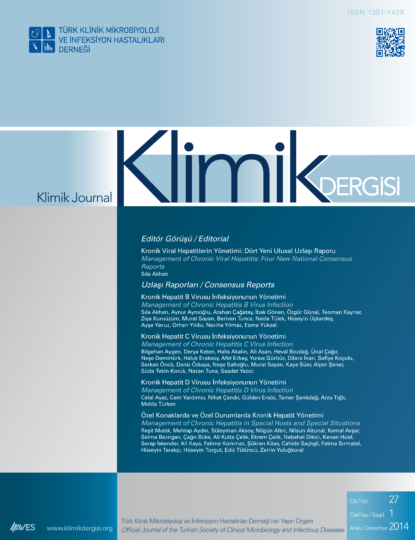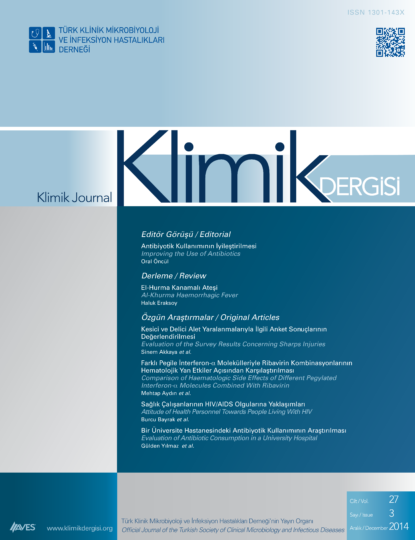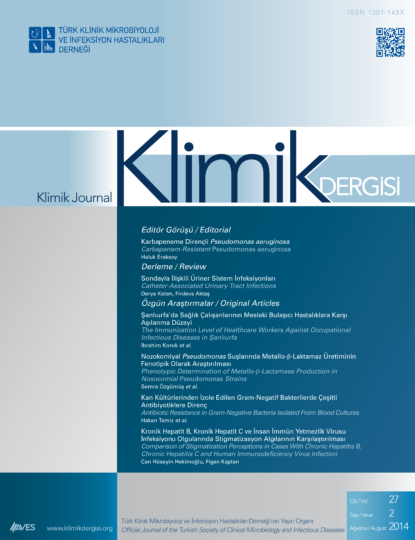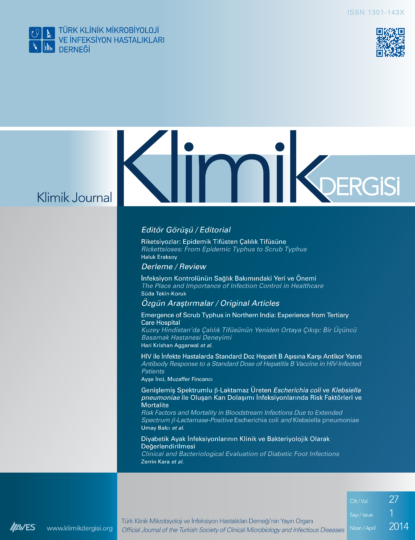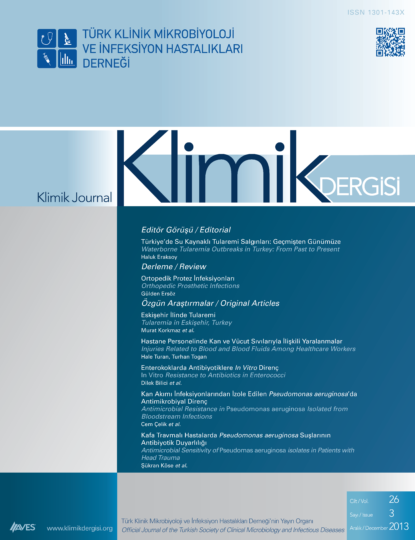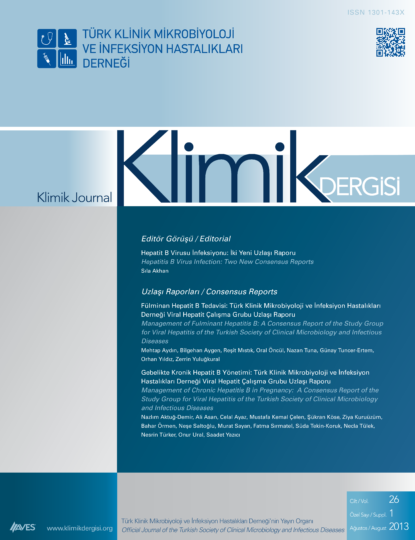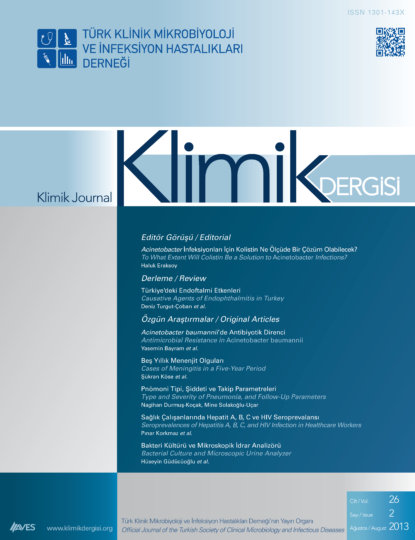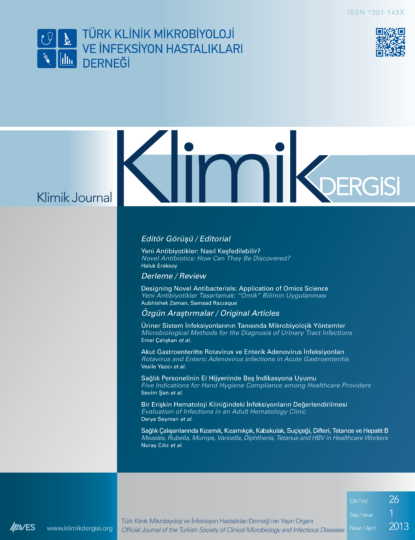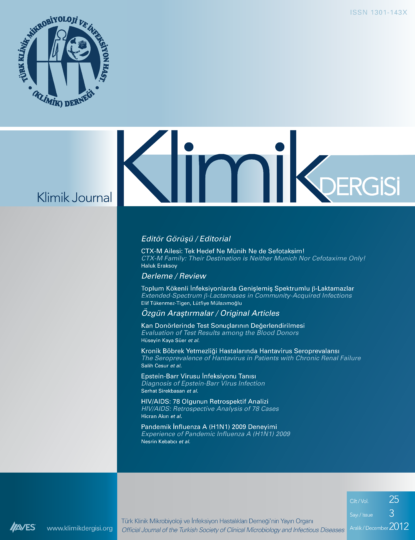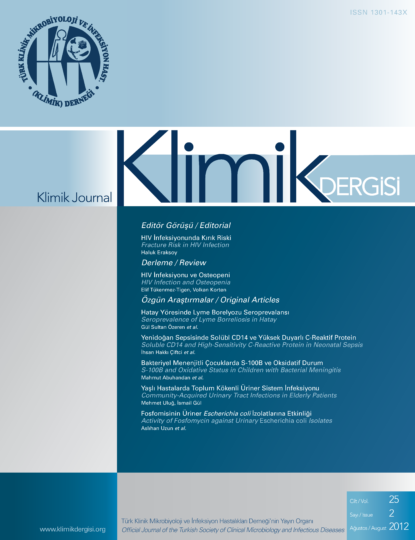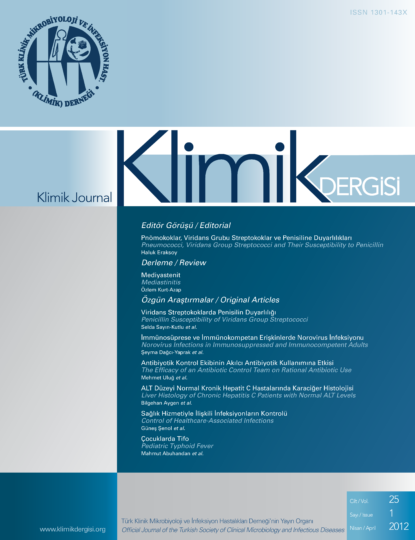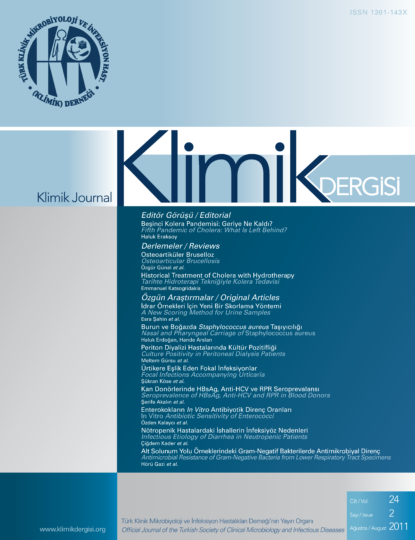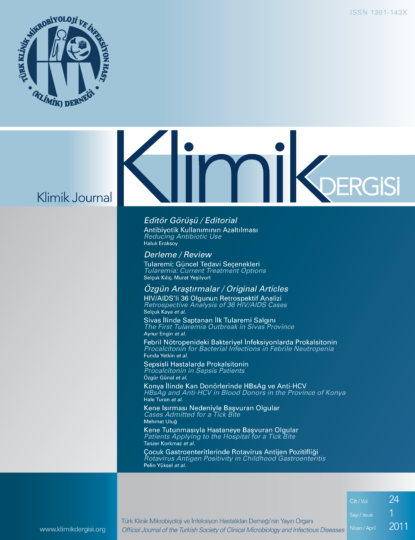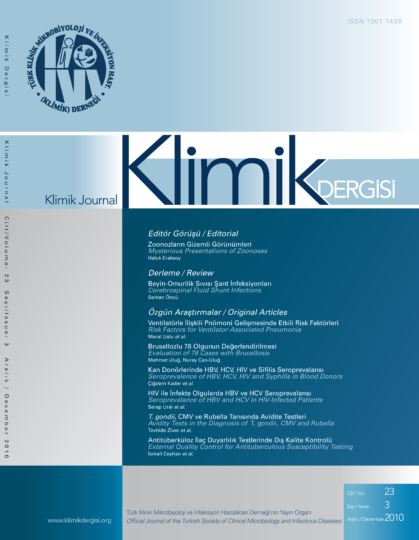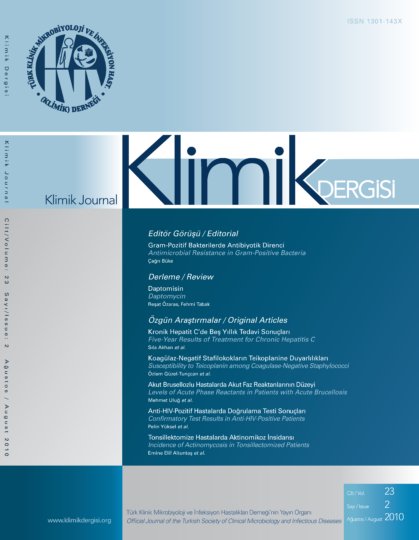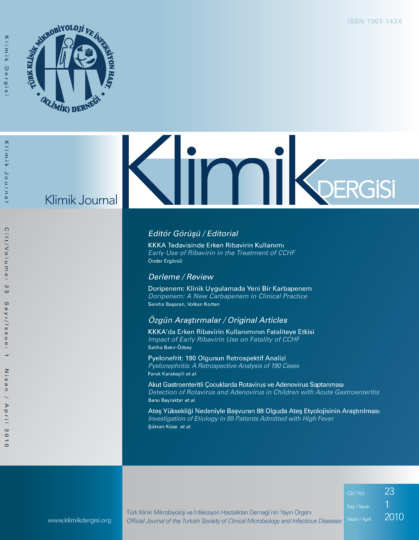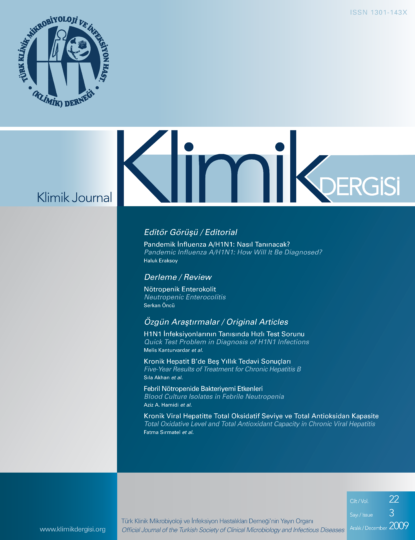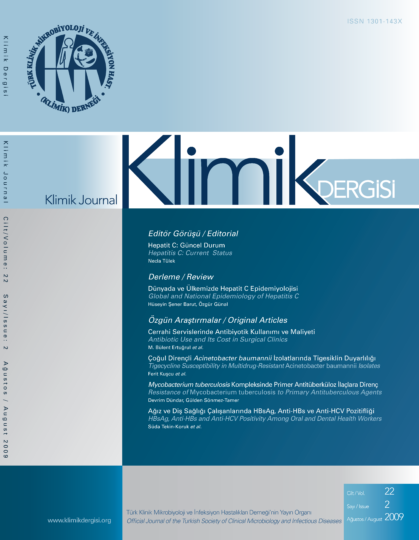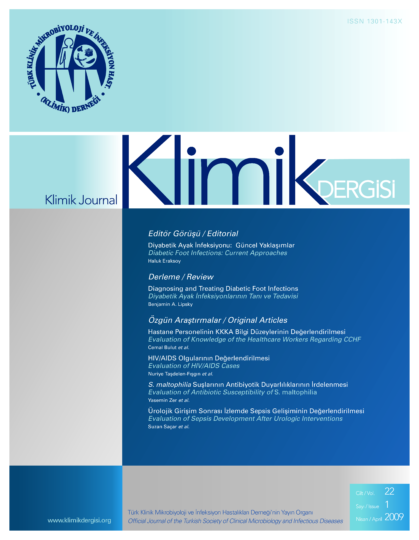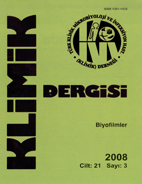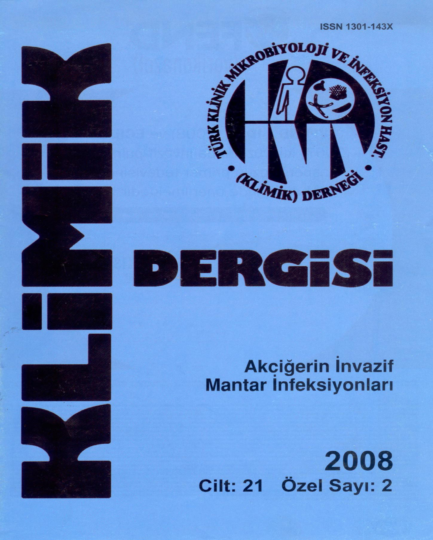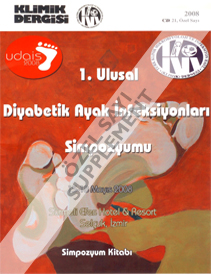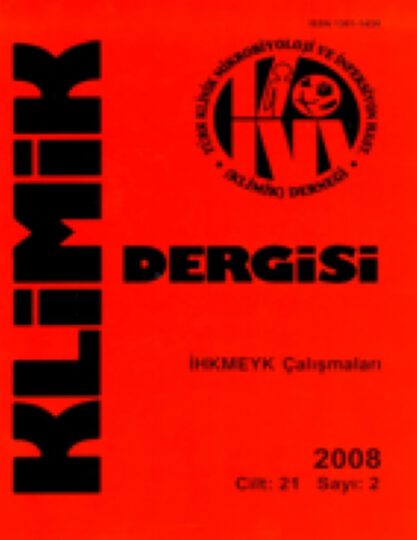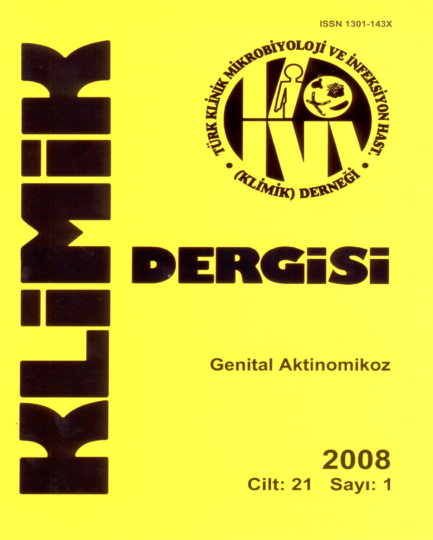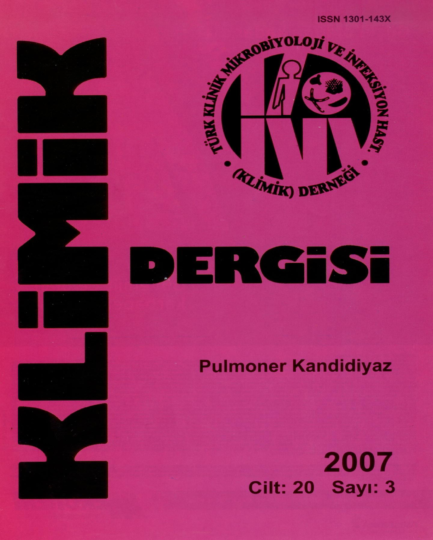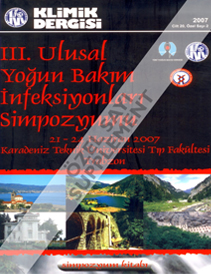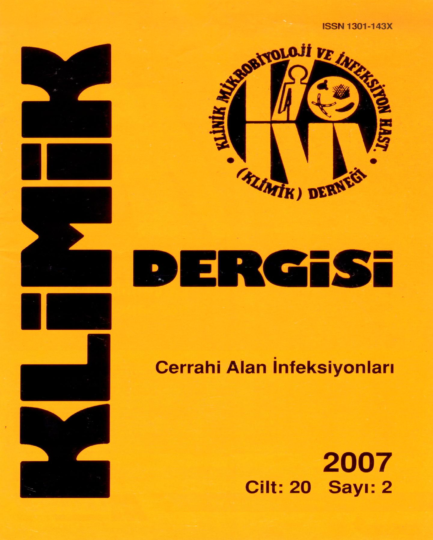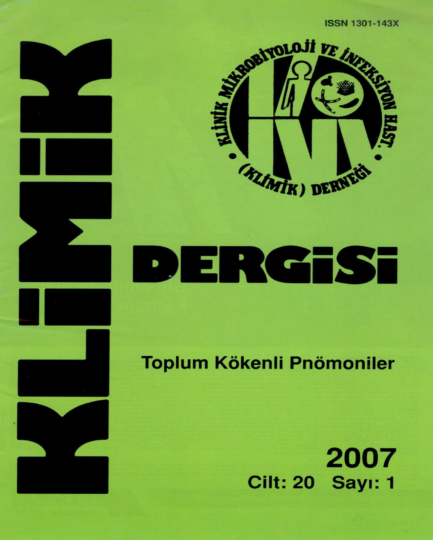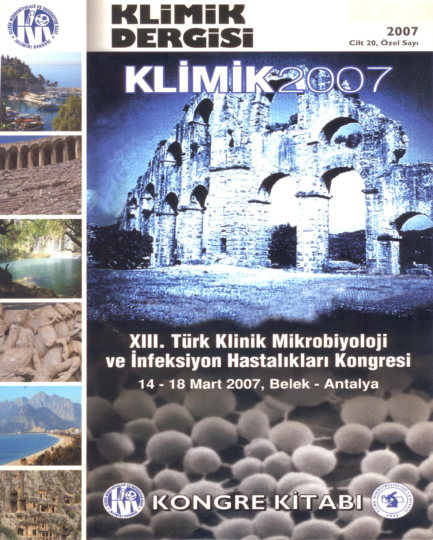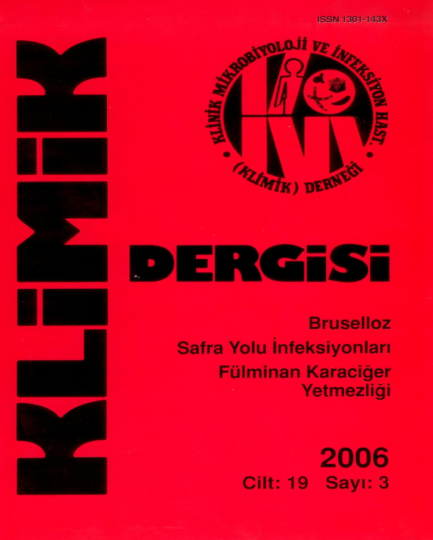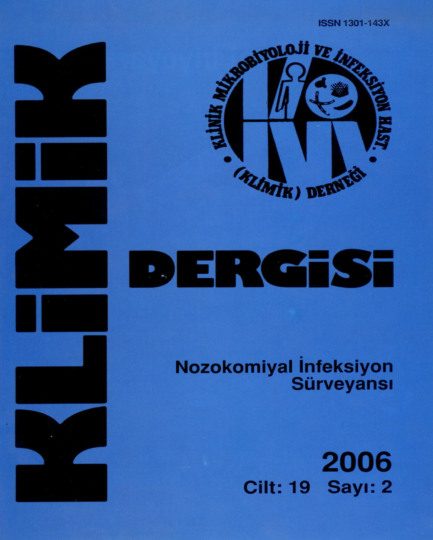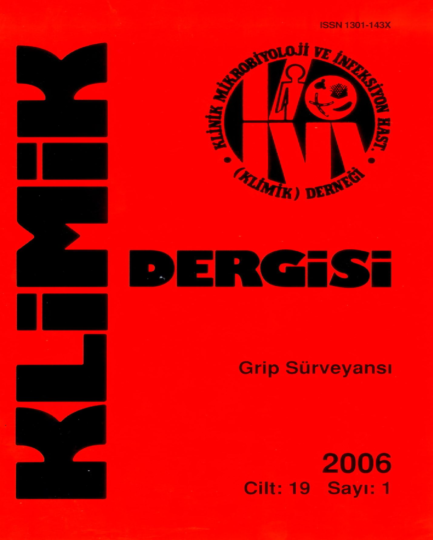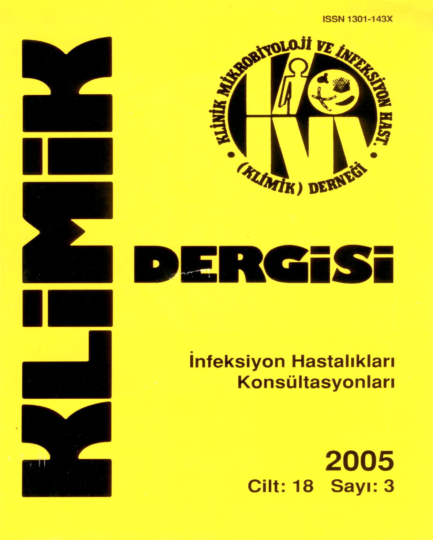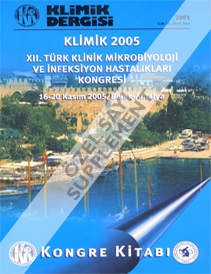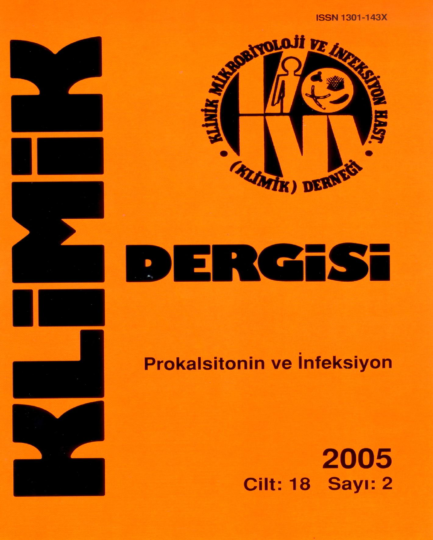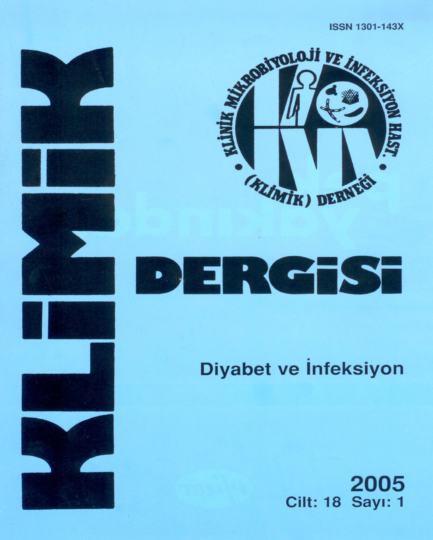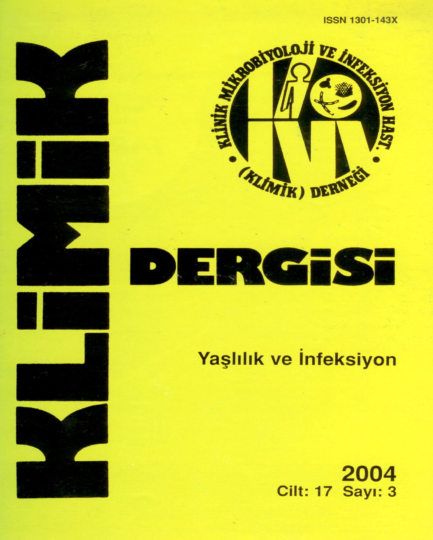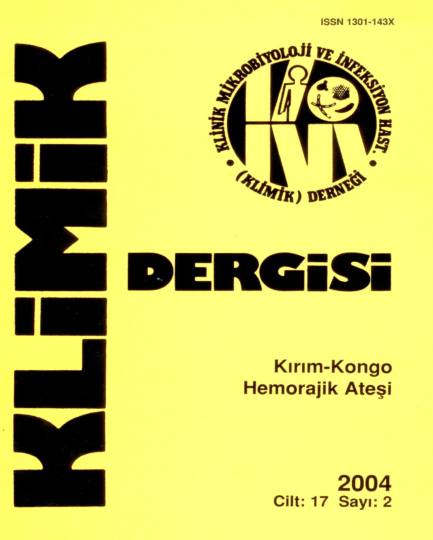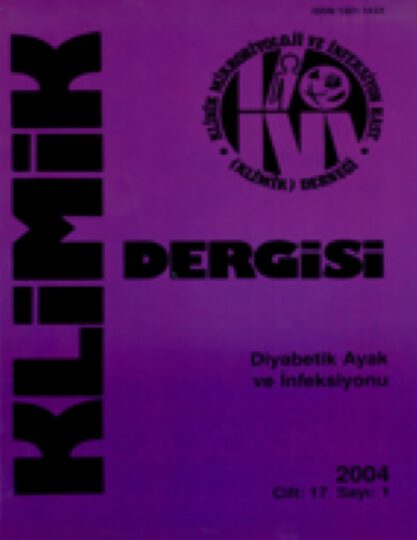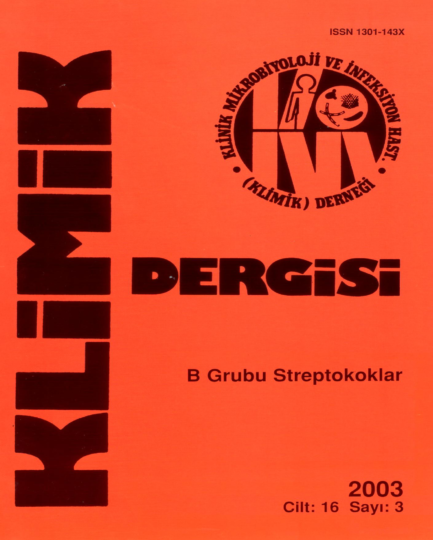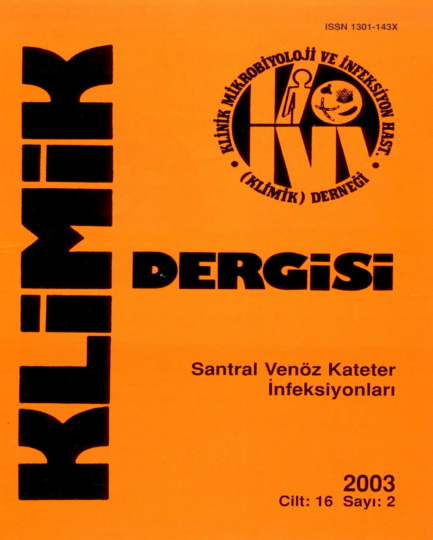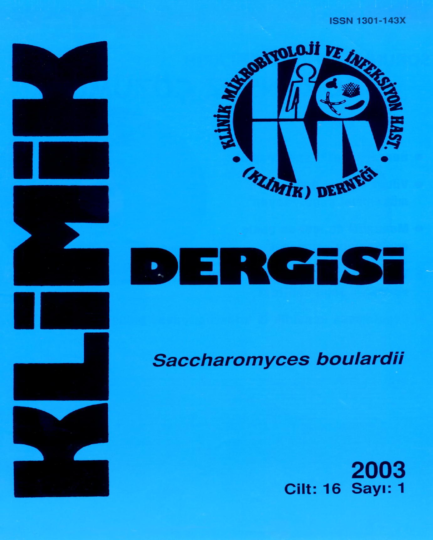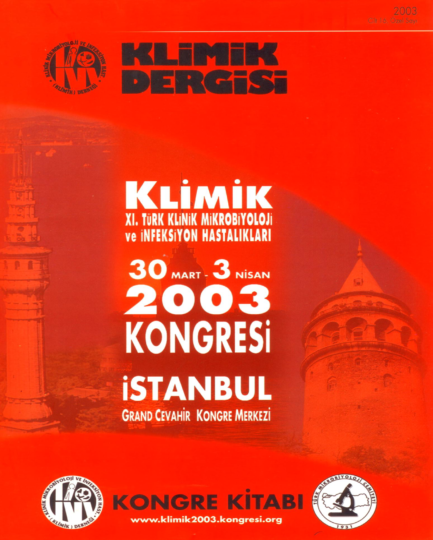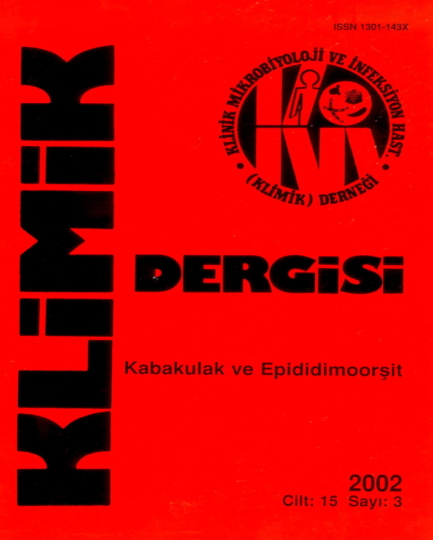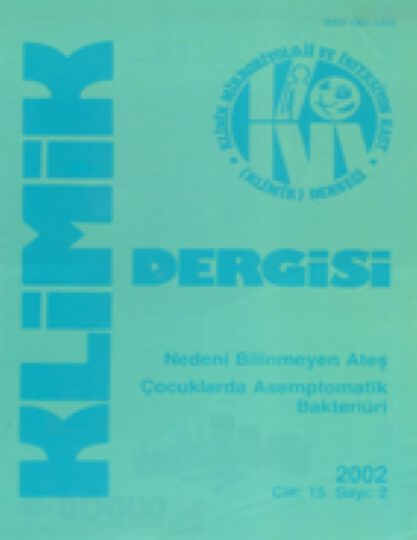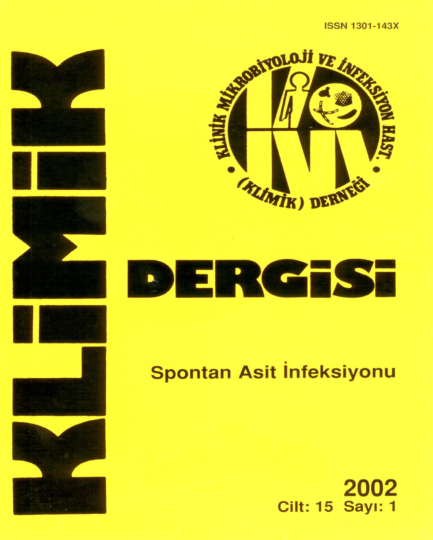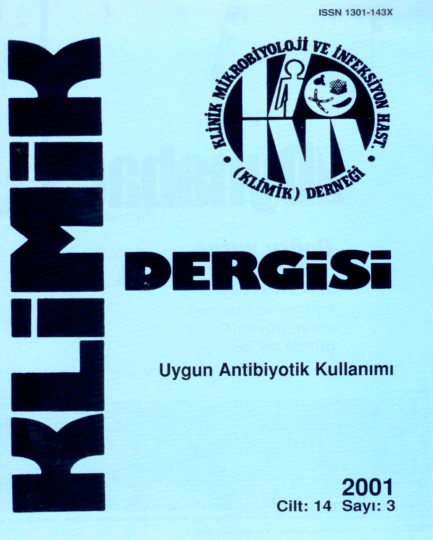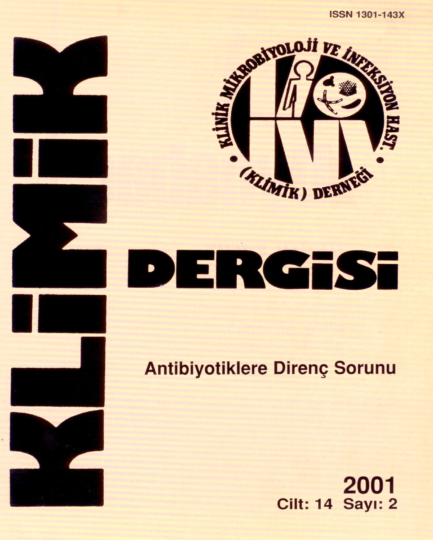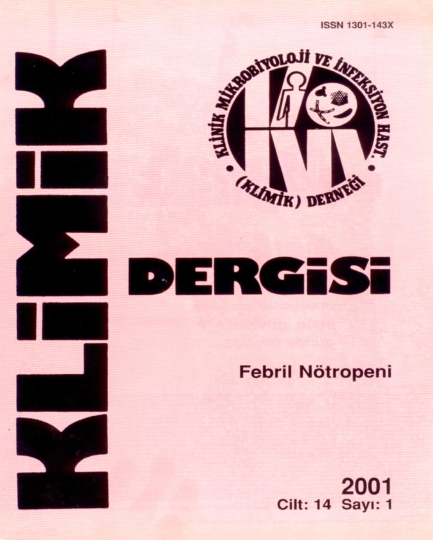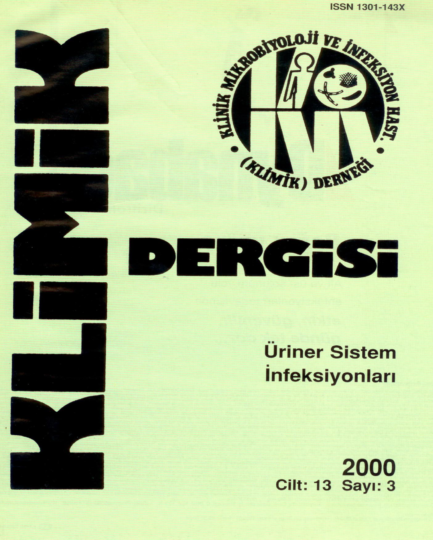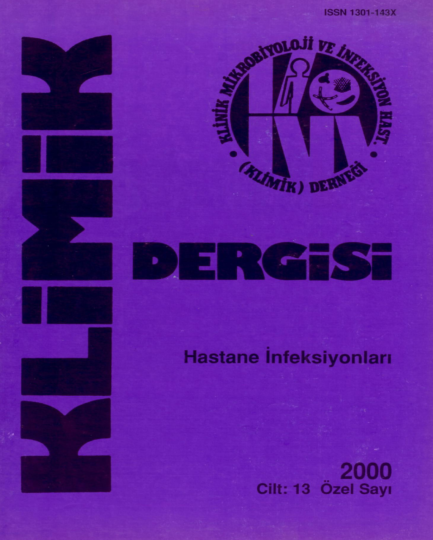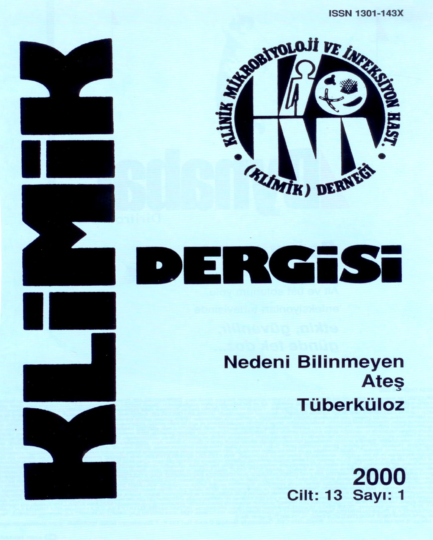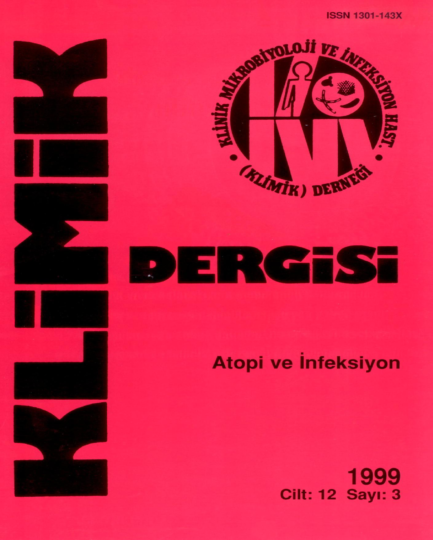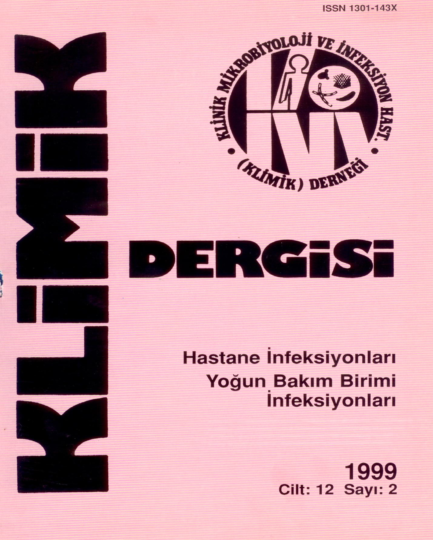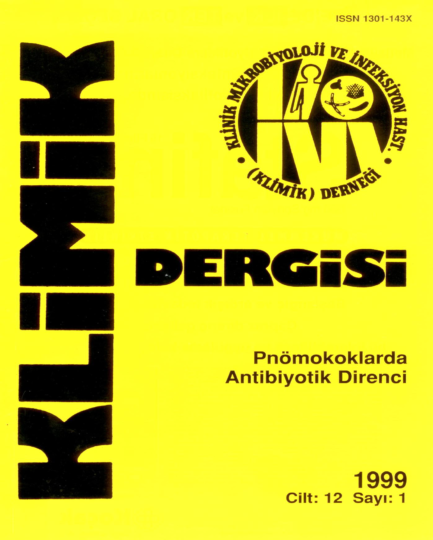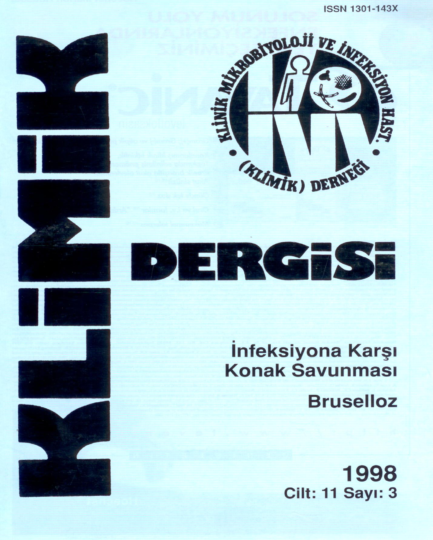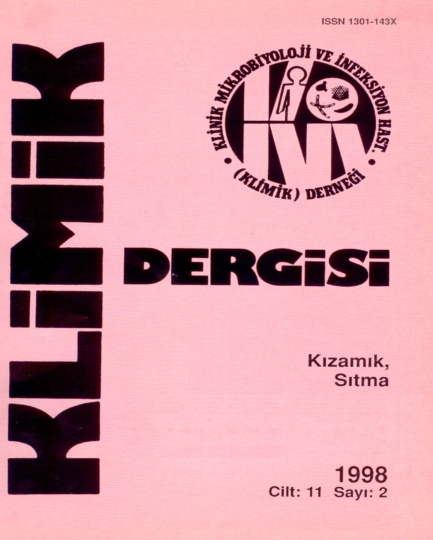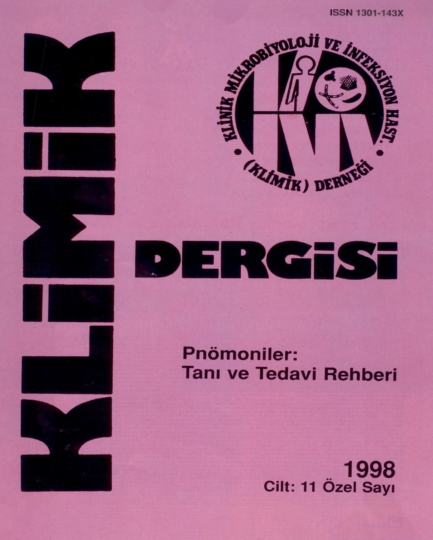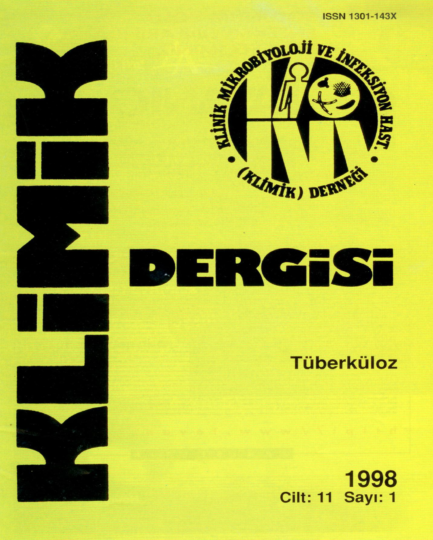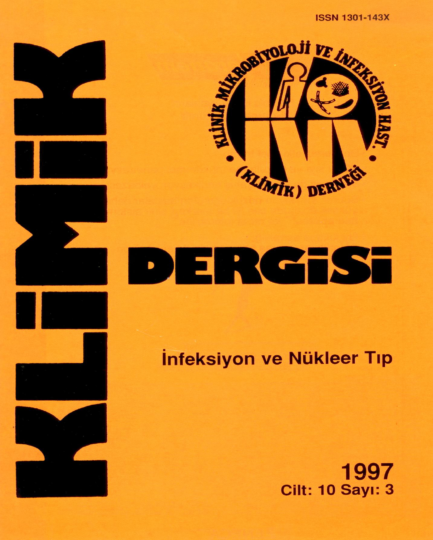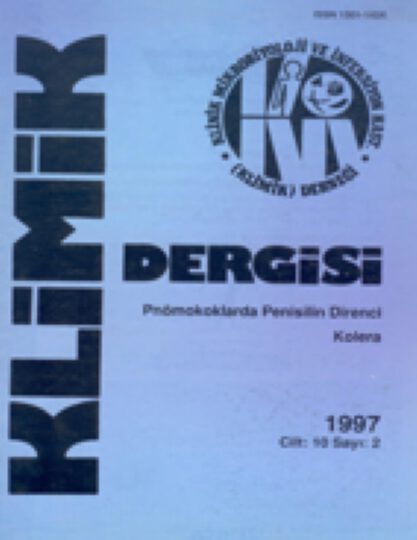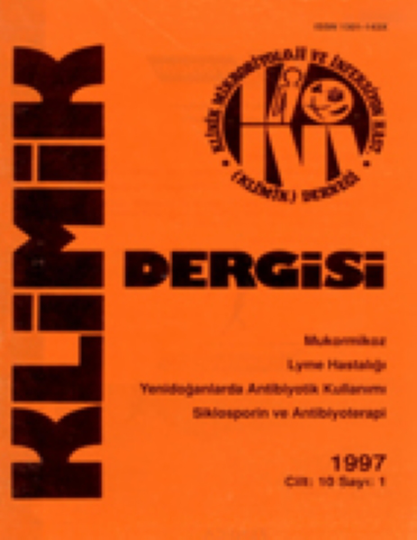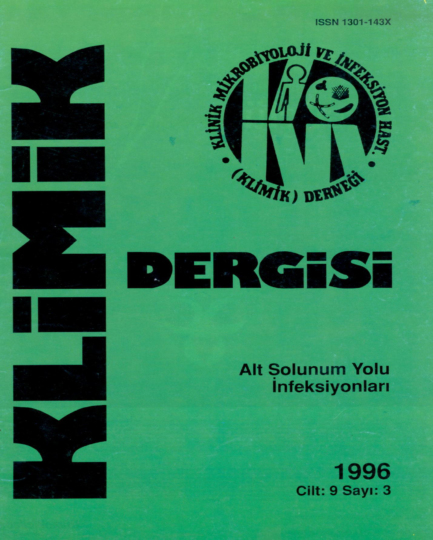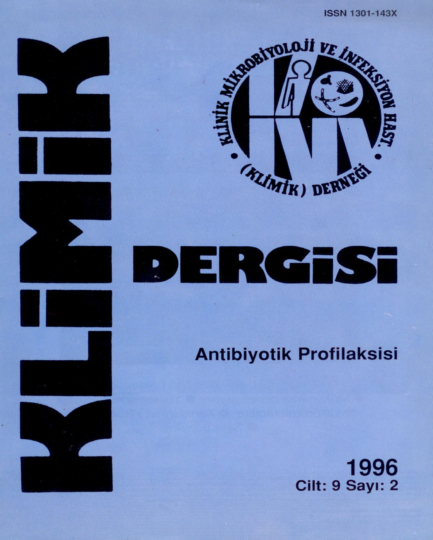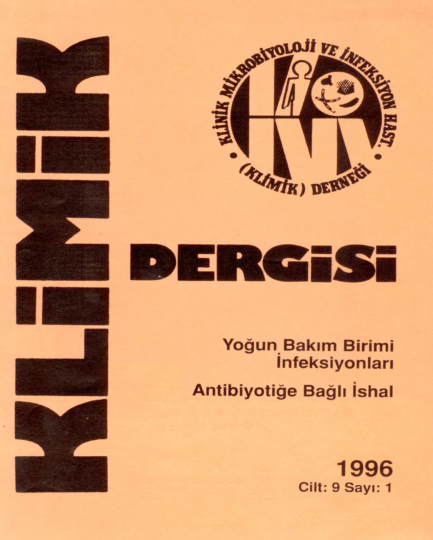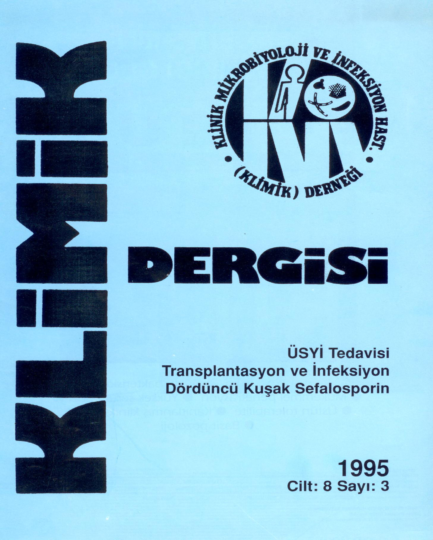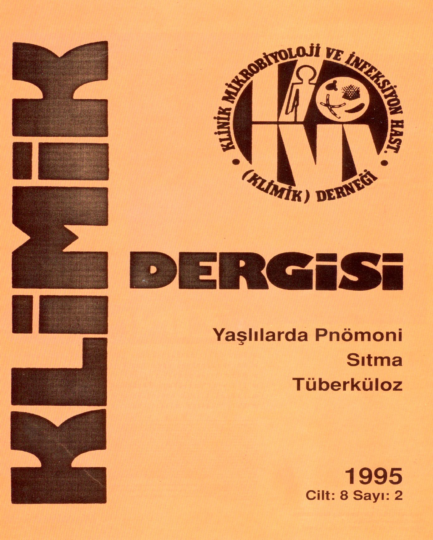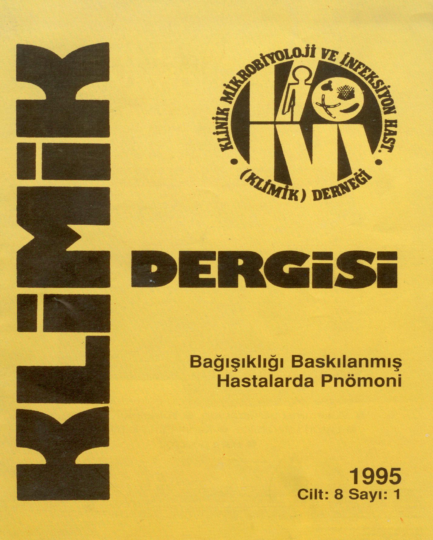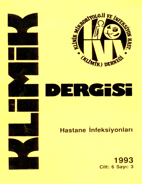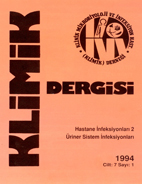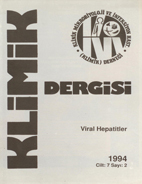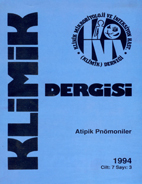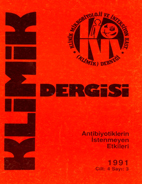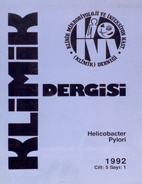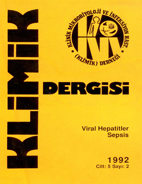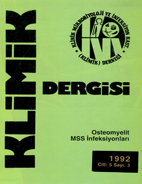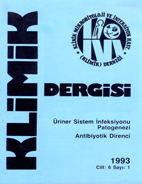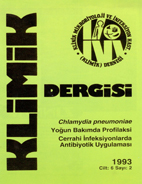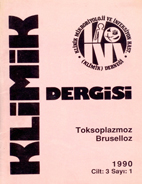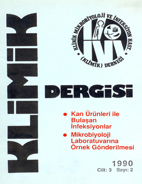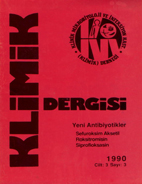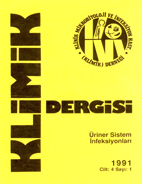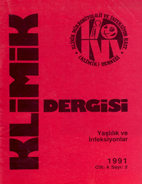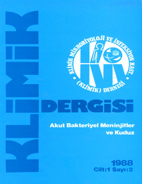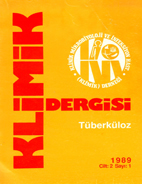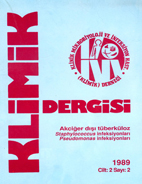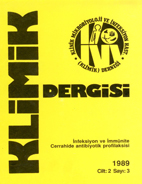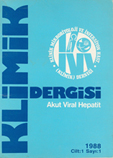Most Read
Instructions to Authors
The editorial and publication processes of the Klimik Journal are shaped in accordance with the guidelines of the International Committee of Medical Journal Editors (ICMJE), World Association of Medical Editors (WAME), Council of Science Editors (CSE), Committee on Publication Ethics (COPE), European Association of Science Editors (EASE), and National Information Standards Organization (NISO). In addition, the journal is in conformity with the Principles of Transparency and Best Practice in Scholarly Publishing (doaj.org/bestpractice).
Klimik Journal aims to publish high-quality basic and applied research articles on diagnosis, treatment, and prevention in infectious diseases, clinical microbiology, virology, parasitology, immunology, and epidemiology. In addition, reviews, editorial opinions, letters to the editor, and case reports are also accepted.
The target group of the journal is infectious diseases and clinical microbiology specialists, medical doctors, and practitioners interested in infectious diseases.
Klimik Journal is an international journal based on independent and unbiased peer-review principles. The articles are evaluated according to the “double-blind” system in terms of the consultant and the author.
The Editor-in-chief evaluates articles regardless of the authors’ age, ethnicity, gender, nationality, religious beliefs, sexual orientation, and political affiliation.
The publication language of the journal is Turkish. However, foreign authors’ manuscripts in English are also accepted.
Klimik Journal does not charge a publication fee.
Authors submit their articles through the Klimik Journal online manuscript submission system. The submitted manuscripts are first checked in terms of technical aspects. The language, figures, tables, necessary documents related to the article (author contribution form, copyright approval form, patient consent for case reports, ethics committee approval), references are reviewed, and plagiarism is checked. The manuscript that passes this stage is forwarded to the editor-in-chief. The Editor-in-chief evaluates whether the manuscript’s content is compatible with the journal’s publication policy, whether it is prepared following the journal’s publication rules and the manuscript’s scientific contribution to the field. After this evaluation, if appropriate, the manuscript is directed to the editor to initiate the scientific content control process. The editor assigns at least two reviewers through the system to evaluate the manuscript’s scientific content and report their suggestions, criticisms, and contributions. They also direct it to the Statistics Editor when it deems necessary. The editor cares for selecting the reviewers among experts who do not have a conflict of interest with the authors. While the manuscript is sent to the reviewers, the information of the author and the institution where the study was conducted is hidden to prevent any bias. The editor evaluates the reviewers’ suggestions, criticisms, and contributions, and if they find them sufficient, forwards them to the author. When the editor deems it necessary, they direct the manuscript to other reviewers. The names of the reviewers are hidden while the suggestions, criticisms, and contributions are forwarded to the authors. Thus, it is ensured that the scientific content of the manuscripts is evaluated in a double-blind way, away from bias and objectively. After the authors make the necessary arrangements, the manuscript is sent back to the editor, and the editor sends it to the reviewers for re-evaluation. Manuscripts deemed sufficient in this evaluation are accepted for publication. Manuscripts deemed unsuitable for publication by the reviewers are rejected. Manuscripts for which they want new corrections and edits are sent back to the authors. After the manuscript accepted for publication is reviewed by the English and Turkish language editors, the publisher prepares it for publication and sends it to the authors for final check and approval. The ready articles are published on the journal’s website.
The authors should acknowledge and provide information on grants, contracts, or other financial support for the study provided by any foundations, institutions, or firms.
Manuscripts sent to be published in the journal should not have been published anywhere else previously or submitted and accepted to be published. However, a complete report that follows the publication of a preliminary report, such as an abstract, can be submitted. If authors intend to discard any part of the manuscript, a written application should be sent to the Editor.
In case of retraction of the text by author(s) for any reason, it needs a written application explaining the reasons.
The name of the institution where the authors work and the name of the institution or the department in which the study has been conducted should not be mentioned in the submitted manuscript.
The corresponding author must give the full correspondence address (including telephone, fax number, and e-mail address). Contact information of the corresponding author is published in the journal.
The authors should keep a copy of the submitted manuscripts and other documents.
If the whole or a part of the submitted manuscript needs to be published somewhere else, Editorial Office must be informed accordingly.
COPYRIGHT
Klimik Journal requires each submission to be accompanied by a Copyright License Agreement. By signing the Copyright License Agreement, the authors agree that the article, if accepted for publication by Klimik Journal, will be licensed under a Creative Commons Attribution-NonCommercial 4.0 International License (CC-BY-NC 4.0).
Authors grant the Publisher non-exclusive commercial right to publish the work. CC BY-NC 4.0 license permits unrestricted, non-commercial use, distribution, and reproduction in any medium, provided the original work is properly cited. The final responsibility in regard to the published content rests with the authors.
Authors must obtain permission from the copyright holder when using previously published content, including figures, tables, or any other material in both print and electronic formats. Legal, financial and criminal liabilities in this regard belong to the author(s).
All opinions and reports within the articles published in Klimik Journal are the personal opinions of the author(s). Therefore, the Turkish Society of the Clinical Microbiology and Infectious Diseases, editor-in-chief, editorial board, and the publisher does not accept any responsibility for these articles.
AUTHORSHIP
Each individual listed as an author should fulfill the authorship criteria recommended by the International Committee of Medical Journal Editors (ICMJE – www.icmje.org).
The ICMJE recommends that authorship be based on the following four criteria:
- Substantial contributions to the conception or design of the work; or the acquisition, analysis, or interpretation of data for the work;
- Drafting the work or revising it critically for important intellectual content;
- Final approval of the version to be published;
- Agreement to be accountable for all aspects of the work in ensuring that questions related to the accuracy or integrity of any part of the work are appropriately investigated and resolved.
Corresponding authors are required to submit a signed and scanned version of the Authorship Contribution Form to the journal’s online manuscript submission system.
MANUSCRIPT STRUCTURE
Manuscripts are divided into sections according to the following manuscript types. Each section should be started in a new page: Title, abstract and keywords (Turkish and English), main text, references, tables/figures (each table should be written on a separate page with its title and footnotes), legends of the figures.
The title page of all types of manuscripts should include:
- Turkish title and Turkish short title,
- English title and English short title.
Each section of the manuscript title, abstract, main text, acknowledgements, tables and legends of the figures should be written double spaced and font size 12. There should be generous margins on each side of the paper. Each page of the manuscript should be numbered consecutively. In addition, line numbers should be given in the main text.
The title of the manuscript should not be too long and should reflect the content.
Spelling and grammatical errors in manuscripts submitted to our journal and accepted for publication after the evaluation are corrected without violating the article’s content. The authors are deemed to have accepted these corrections.
Keywords should be given in accordance with Medical Subject Headings (https://www.nlm.nih.gov/mesh/Mbrowser.html).
STATISTICAL ANALYSIS
Although Klimik Journal has a statistical editor, following the rules below while performing statistical analysis in original articles and reporting the results will reduce unnecessary time loss and increase the comprehensibility of the article. In medical journals, statistical analysis should be performed according to the statistical data submission guideline (Altman DG, Gore SM, Gardner MJ, Pocock SJ. Statistical guidelines for contributors to medical journals. Br Med J 1983: 7; 1489-93) and should be presented in the article. The name and version of the software used in the analysis should be specified. When parametric tests are required to compare continuous variables, the results should be given as mean ± standard deviation. If non-parametric tests are required, the results should be given as “median (minimum-maximum values)” or as % slices and inter-slices oscillation (IQR). When relative risk RR), odds ratio (OR), or hazard ratio (HR) are to be given, not only “p-value” but also confidence intervals should be given.
ARTICLE TYPES
Original Article
- Title page
- Structured Turkish Abstract (objective, methods, results, conclusion) and Structured English Abstract (300 words each)
- Turkish and English keywords (A minimum of two to a maximum of six keywords should be in accordance with the National Library of Medicine, Medical Subject Headings database.)
- Main Text: It should not exceed 5000 words, excluding references. It should be divided into Introduction, Methods, Results, and Discussion sections. The “Methods” and “Results” sections can be divided into subtitles if necessary. The methods section should include the board and date/number from which the ethics committee approval was obtained.
- Acknowledgment (optional), conflict of interest statement, authors’ contribution to the study/article.
- References: Detailed rules below should be followed, and the number of references should not exceed 50.
- Tables and Figures: If available, they should be consecutively in the order they are referred to within the main text; each should be given a short title, and the title should be placed at the top of the tables and below the figures.
Case Report
Since the number of case reports in the journal is limited, only rare cases with difficulties in diagnosis or treatment or educationally valuable cases containing extraordinary information and that can be evaluated as interesting will be accepted.
A case report should be prepared as follows:
- Title page
- Unstructured Turkish abstract (100 words), English abstract (100 words)
- Turkish and English keywords (A minimum of two to a maximum of four keywords should be in accordance with the National Library of Medicine, Medical Subject Headings database.)
- Main Text: It should be structured as “Introduction, Case (s), Discussion” sections and a maximum of 1000 words.
- References: Detailed rules below should be followed, and the number of references should not exceed 10.
- Tables and Figures: If available, they should be consecutively in the order they are referred to within the main text; each should be given a short title, and the title should be placed at the top of the tables and below the figures.
Review Article
Klimik Journal accepts review articles, upon the invitation of the Editor-in-Chief, from people who have in-depth knowledge in their field, are nationally and internationally known for their work in a certain field in their professional life, and have many cited publications in that field. It is expected that the review articles will summarize the current knowledge on a certain topic, reveal the knowledge gap, shed light on future studies, and open a horizon for those working in the field of infectious diseases and clinical microbiology.
A review article should be prepared as follows:
- Title Page
- Unstructured Turkish abstract (100 words), English abstract (100 words)
- Turkish and English keywords (A minimum of three to a maximum of six keywords should be in accordance with the National Library of Medicine, Medical Subject Headings database.)
- Highlights: It is a 4-5-item section that includes the most remarkable headings of the current knowledge in clinical practice and/or scientific development, the most critical unanswered questions, and/or scientific predictions. It should consist of a maximum of 150 words.
- Main Text: The review article’s main text can be divided into subheadings as the author deems appropriate.
- References: Detailed rules below should be followed, and the number of references should not exceed 75.
- Tables and Figures: If available, they should be consecutively in the order they are referred to within the main text; each should be given a short title, and the title should be placed at the top of the tables and below the figures.
Opinion Essay/Report
This is the article containing the opinions or reports of the institutions or individuals who have a say in the field of infectious diseases and clinical microbiology on important issues on the agenda. It is published after editorial evaluation without being subject to peer review. There is no word or reference limit. The opinions in such articles bind the author, and the criticisms and contributions of the journal readers regarding the opinion will also be published under the same title after an editorial evaluation. Thus, it is aimed to provide a platform for scientific discussion on important issues concerning the field.
Editorial
Editorial is an opinion letter written by an expert scientist in the field of the article, upon the invitation of the Editor-in-Chief, regarding an original article in Klimik Journal. The editorial is expected to summarize the findings in the relevant article and include its contribution to the field of science and future views.
An editorial should be prepared as follows:
- Title Page
- Main Text: It should not be subdivided into subheadings and should contain a maximum of 500 words.
- References: Detailed rules below should be followed, and the number of references should not exceed 5.
- Tables and Figures: This type of manuscript contains at most one table or figure.
Letter to the Editor
A Letter to the Editor is published in order to express the opinions of the readers about an article published in Klimik Journal or to express an opinion on any subject that is of interest to Klimik Journal.
A Letter to the Editor type article should be prepared as follows:
- Title Page
- Main Text: It should not be divided into subheadings and should consist of a maximum of 500 words.
- References: Detailed rules below should be followed, and the number of references should not exceed 5.
- Tables and Figures: This type of manuscript contains at most one table or figure.
REFERENCES
The style for references is based mainly on an American National Standards Institute style (http://www.ncbi.nlm.nih.gov/books/bv.fcgi?rid=citmed.TOC&depth=2).
The references are numbered in the order of citation in the main text. References are given in parenthesis with an Arabic numeral(s). Sources used only in the table or legend of a figure should be numbered in the order of citation.
The titles of journals must be abbreviated according to the style used in the List of Journals Indexed for MEDLINE (ftp://ftp.nlm.nih.gov/online/journals/lsiweb.pdf).
1. Journal Article
Less Than Six Authors
Öztürk DB, Kuşçu F, Gürbüz Y, Gül S, Tütüncü EE, Şencan İ. Kliniğimizde 2006-2007 yılları arasında takip ettiğimiz 20 Kırım-Kongo kanamalı ateşi olgusunun değerlendirilmesi. Klimik Derg. 2008;21(3):93-6.
More Than Six Authors
Eraksoy H, Basustaoglu A, Korten V, et al. Susceptibility of bacterial isolates from Turkey: a report from the Meropenem Yearly Susceptibility Test Information Collection (MYSTIC) Program. J Chemother. 2007;19(6):650-7.
2. Supplement Article
Ceylan E, Ertuğrul MB. Hematolojik malignitesi olmayan hasta grubunda akciğerin mantar infeksiyonlarına klinik yaklaşım. Klimik Derg. 2008;21(Suppl. 2):11-22.
3. Anonymous
Drug-resistance tuberculosis among the foreign-born in Canada. Can Commun Dis Rep. 2005;31(4):46-52.
4. Textbook Chapter
BY AUTHOR
Turkish
Serter D. Virüs, Riketsiya ve Klamidya Hastalıkları. İstanbul: Nobel Tıp Kitabevleri, 1997: 27-32.
English
Mims CA, Nash A, Stephen J. Mims’ Pathogenesis of Infectious Diseases. 5th ed. San Diego: Academic Press, 2001: 361-91.
BY EDITORS
Turkish
Aktaş F. Antiviral ilaçlar. In: Willke Topçu A, Söyletir G, Doğanay M, eds. Enfeksiyon Hastalıkları ve Klinik Mikrobiyolojisi. 3. baskı. İstanbul: Nobel Tıp Kitabevleri, 2008: 399-424.
English
Musher DM. Streptococcus pneumoniae. In: Mandell GL, Bennett JE, Dolin R, eds. Mandell, Douglas, and Bennett’s Principles and Practice of Infectious Diseases. 6th ed. Philadelphia: Churchill Livingstone, 2005: 2392-411.
5. Abstract in Congress Book
Turkish
Özakın C, Mıstık R, Akdiş AC. Uludağ Üniversitesi Tıp Fakültesi İnfeksiyon Hastalıkları Kliniği’nde son altı yıl içinde izlenen bakteriyel menenjitlerin tanı ve tedavi açısından değerlendirilmesi [Özet]. In: Türk Klinik Mikrobiyoloji ve İnfeksiyon Hastalıkları Kongresi (11-15 Eylül 1994, Ürgüp) Kitabı. İstanbul: Klinik Mikrobiyoloji ve İnfeksiyon Hastalıkları Derneği, 1994: 283-4.
English
Elaldi N, Kaya S, Dokmetas I, et al. Markedly elevated serum cytokine levels and high viral titers in fatal Crimean-Congo hemorrhagic fever (CCHF) [Abstract]. In: Abstracts of 47th Annual Interscience Conference on Antimicrobial Agents and Chemotherapy (Chicago, Illinois, September 17-20, 2007). Washington, DC: American Society for Microbiology, 2007: 482.
6. Letter to the Editor
Turkish
Yavaşoğlu İ, Kadıköylü G, Bolaman Z. Komayla seyreden bir nörobruselloz olgusu [Mektup]. Klimik Derg. 2007;20(2):63.
English
Doganci L. New insights on the bleeding disorders in CCHF [Letter]. J Infect. 2007;55(4):379-81.
7. Internet
By Authors
Çelebi G. Tularemi [Internet]. İstanbul: Turkish Society of Clinical Microbiology and Infectious Diseases [cited 22 January 2019]. http://www.klimik.org.tr/home/tularemi.asp?cont=makale.
Standard
Avian Influenza: Current H5N1 Situation [Internet]. Atlanta, GA: Centers for Disease Control and Prevention [cited 30 December 2018]. https://www.cdc.gov/flu/avianflu/h5n1-virus.htm.
TABLES AND FIGURES
Each table should be on a separate page. The tables should be numbered consecutively in the order of their first citation in the text, and each table should supply a brief title. Do not use internal horizontal or vertical lines. Give each column a short or an abbreviated heading. Authors should place explanatory matter in footnotes, not in the heading. Explain all nonstandard abbreviations in footnotes, and use the following symbols, in sequence: *,†,‡,§,||,¶,**,††,‡‡. If you use data from another published or unpublished source, obtain permission and acknowledge that source fully. Additional tables containing backup data too extensive to publish in print may be appropriate for publication in the electronic version of the journal.
The figures should be numbered in the order of citation in the main text. They should be in high-quality .jpg format. The title should be placed below the figures. The figures are preferred in black and white; however, if they are not clear in black and white, colored ones are accepted as well.
REPOSITORY POLICY
Klimik Journal uses Pleksus, a journal management system, and archives the submitted, revised, accepted, and published versions of manuscripts on Pleksus. Authors are allowed to reach all these versions without any embargo.
